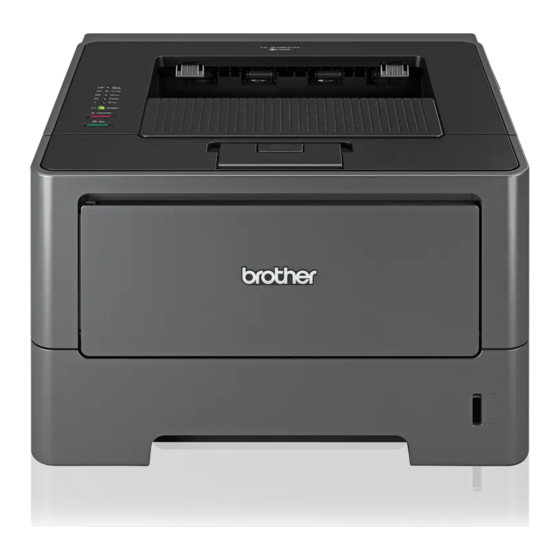- ページ 5
ソフトウェア Brother DCP-8110DNのPDF マニュアルをオンラインで閲覧またはダウンロードできます。Brother DCP-8110DN 36 ページ。 Printer
Brother DCP-8110DN にも: 上級ユーザーマニュアル (50 ページ), ネットワーク・マニュアル (29 ページ), マニュアル (27 ページ), クイック・セットアップ・マニュアル (23 ページ), ユーザーマニュアル (23 ページ), 製品安全マニュアル (23 ページ), 上級ユーザーマニュアル (39 ページ), 製品安全マニュアル (22 ページ)

1
Introduction
Overview
Secure Socket Layer (SSL) is an effective method of protecting data which is sent over a local or wide area
network. It works by encrypting data sent over a network, i.e. a print job, so anyone trying to capture it will not
be able to read it as all the data will be encrypted.
It can be configured on both wired and wireless networks and will work with other forms of security such as
WPA keys and firewalls.
Brief History of SSL
SSL was originally created to secure web traffic information, in particular data sent between web browsers
and servers. For example, when you use Internet Explorer
little padlock in the web browser, you are using SSL. It then grew to work with other applications such as
Telnet, printers and FTP software in order to become a universal solution for online security. Its original
design intentions are still being used today by many online retailers and banks to secure sensitive data, such
as credit card numbers, customer records etc.
SSL uses extremely high levels of encryption and is trusted by banks all over the world since it is unlikely that
it will be broken.
Benefits of using SSL
The sole benefit to using SSL on Brother machines is to provide secure printing over an IP network by
restricting unauthorized users from being able to read data sent to the machine. Its key selling point is that it
can be used to print confidential data securely. For example, a HR department for a large company may be
printing wage slips on a regular basis. Without encryption, the data contained on these wage slips can be
read by other network users. However, with SSL, anyone trying to capture the data will only see a confusing
page of code and not the actual wage slip.
®
for Internet Banking and you see https:// and the
1
1
1
1
1
1
